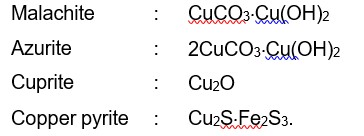6.3 The reaction, Cr2O3+2Al → Al2O3+2Cr (?rG0 = – 421kJ) is thermodynamically feasible as is apparent from the Gibbs energy value. Why does it not take place at room temperature?
6.3 The reaction, Cr2O3+2Al → Al2O3+2Cr (?rG0 = – 421kJ) is thermodynamically feasible as is apparent from the Gibbs energy value. Why does it not take place at room temperature?
-
1 Answer
-
The reaction,
Cr2O3 + 2 Al → Al2 O3 + 2 Cr (ΔG0 = – 421 kJ)
Is thermodynamically feasible as is apparent from Gibbs energy value. The change in Gibbs free energy is
related to the equilibrium constant, k as
ΔG = - RT ln K
A certain amount of energy activation is required even for such reactions which are thermodynamically feasible, therefore heating is required.
ΔG = ΔH + S
Increasing the temperature increases the value of TΔS, making the value of ΔG more and more negative.
Therefore, the reaction becomes more and more feasible as the temperature is increased.
Similar Questions for you
Na+ C + N + S ®NaSCN
Fe3+ + SCN–
In the metallurgy of aluminium, purified Al2O3 is mixed with Na3AIF6 or CaF2 which lowers the melting point of the mixture and brings conductivity.
Ellingham diagram explains the feasibility of reduction process not the kinetics of process.
Malachite : CuCO3.Cu (OH)2
Azurite : 2CuCO3.Cu (OH)2
Cuprite : Cu2O
Copper pyrite : Cu2S.Fe2S3.
Taking an Exam? Selecting a College?
Get authentic answers from experts, students and alumni that you won't find anywhere else
Sign Up on ShikshaOn Shiksha, get access to
- 65k Colleges
- 1.2k Exams
- 679k Reviews
- 1800k Answers


